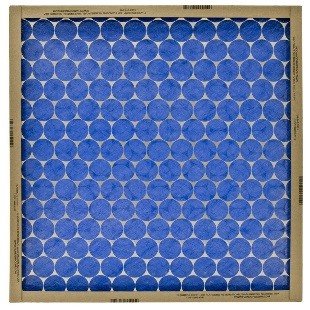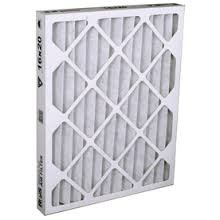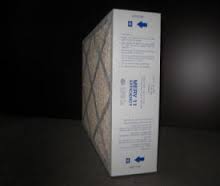What Type Of Filter Should I Use For My Home
The answer depends on what you are actually trying to accomplish with your filter. Some filters are designed to remove only the large particles that can be seen with the naked eye, some are designed to remove slightly smaller particles such as animal dander and others are designed to remove very fine particles which can be considered allergy triggers.
Filter Options

If your priority is to just keep your heating and cooling equipment free of larger particles such as dust and hair, then a standard fiberglass filter will work for you. These filters are typically 1” thick woven fiberglass and when held up to the light, they will allow the majority of light to pass thru. They can be found in most home improvement stores in a variety of sizes and should be changed at least once a month since they have minimal surface area to hold the filtered particles.

If you want not only want to keep your equipment clean but also want to eliminate some of the finer particles such as mold spores and pet dander, a pleated filter that uses a cotton / polyester blend will accomplish this at about a 35% efficiency rate. These filters are typically 1” thick and when held up to light will not allow direct light to pass thru. Due to being pleated, they will have twice as much surface area than the fiberglass filter but should also be changed monthly because they will collect 2 to 3 times the particulate that the fiberglass will collect. These filters can also be found in most home improvement stores in a variety of sizes. Be cautious of some of these pleated filters that are marketed as “high efficiency” because they may cause a restriction to your air flow. If you are not sure if a filter is overly restrictive for your system, call a professional such as RJ Kuhn who can review your air distribution system and make the right recommendation for you.

If you need a filter that can eliminate mold spores, dander and even tobacco smoke at or above a 75% efficiency rate, then a 4” or 5” wide pleated filter will be required. These filters are made from synthetic materials or paper and do not allow light to pass thru. Because of the pleated nature, they provide a filtering surface that is 300% greater than the 1” pleated filter and will usually last 1 year before a change is required. Due to the size of these filters, sheet metal changes will be required to fit this filter between your return duct and furnace air inlet so a professional such as RJ Kuhn will be required to install it for you.
